Clogged Underground Drains can cause a variety of problems to your gutter system and even induce water damage to your home. In this guide we explain how to tell if your underground drains are clogged, and what you can do to prevent this from happening.
Table of Contents
How Does Gutter Drainage Work?
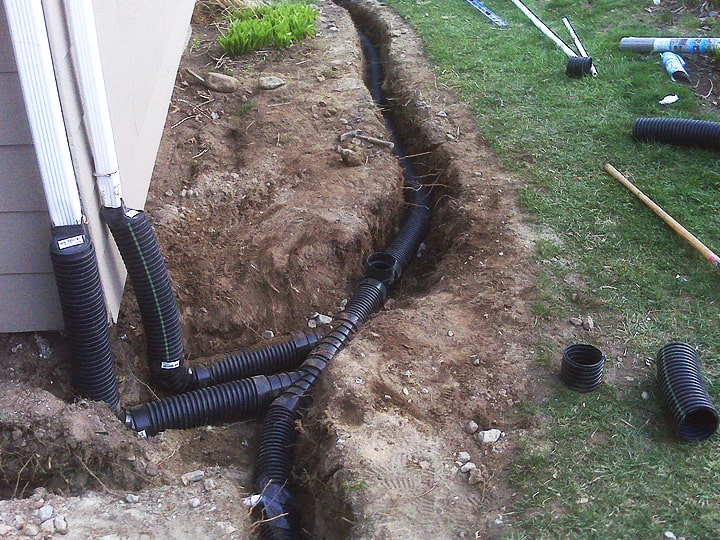
Instead of letting the water collected by the gutters simply seep into the ground underneath the downspout, some homes connect their gutter drain to underground drainage pipes instead.
We call these gutter drainage pipes “underground drains“. These underground drainage pipes re-direct the water away from the home, usually to the street or the sidewalk, in order to avoid water damage to the home or the foundation. Sometimes they even connect directly to the sewer line underground.
When these underground drains become clogged, the water is no longer able to drain properly from the gutter system. This will cause water to overflow in different locations, and eventually cause damages to your gutter system. Keep in mind the drain could be partially clogged and allow some water through, or it could be completely clogged which won’t allow any water through.
Signs Your Gutter Drain is Clogged
We’ll get right to the important stuff here. How to tell if your underground drain is clogged. The easiest way to find out, is to check these crucial points of the gutter system during rain. As with most problems with your gutter system, you’re not going to be able to identify the problem unless you observe your gutter system during rain. If there is a leak or clog, you may not find out until it is too late, because you never saw the signs. Here is a quick list of things to check during rain:
Water Pooling or Overflowing from Downspout Connection
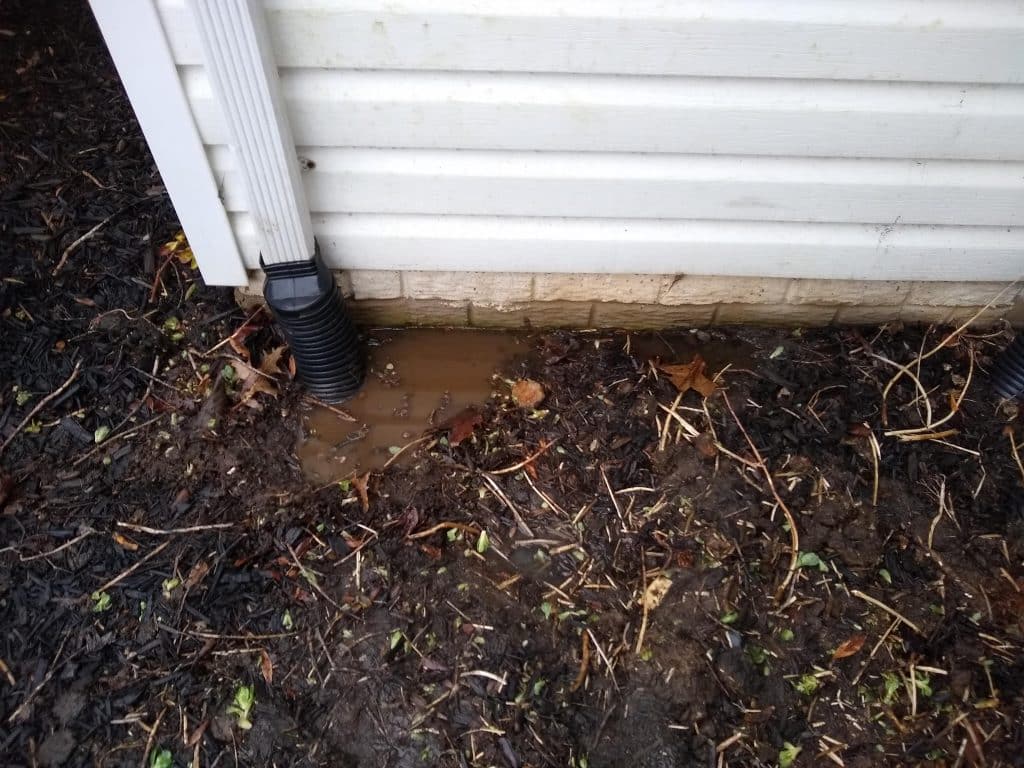
Downspout drains are connected to the underground drains with various sizes and shapes of adapters. Or at least they are supposed to be. All these gutter drain adapters provide the same function, to make the transition seamless from one size of pipe to another. They are supposed to prevent any water from leaking out of the downspouts. (Keep in mind that if you do not have the proper downspout adapter that the water will spill out every time it rains, no mater if the drain is clogged or not.)
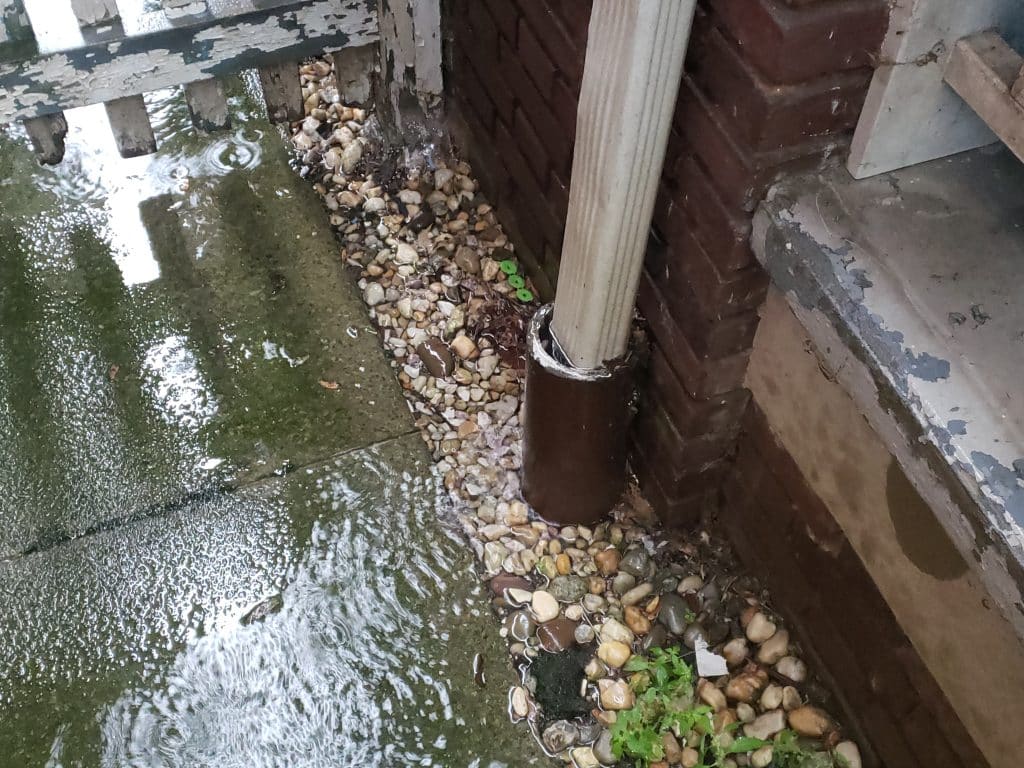
To check if you have clogged underground drains, the first place to look is at the bottoms of all the downspouts around the home. When underground drains are clogged, you will often see the water gushing back out of the drainage pipe and spilling out of the adapter seams. You will only be able to see this during rain, so it is important that you check your downspouts when it is raining.
In the above photos above you can clearly see this drain is clogged. There is water coming back out of the pipe which is a dead giveaway. But also there is water pooled up all around it which is also a giveaway.
If you see a water stain around your underground drain, that is also a sign that it is clogged. This will only be visible if your drain pipe is near pavement, concrete, driveway, or even a deck. More over, if the ground is swampy and over saturated close to your underground drain, that could also be a sign that it’s clogged.
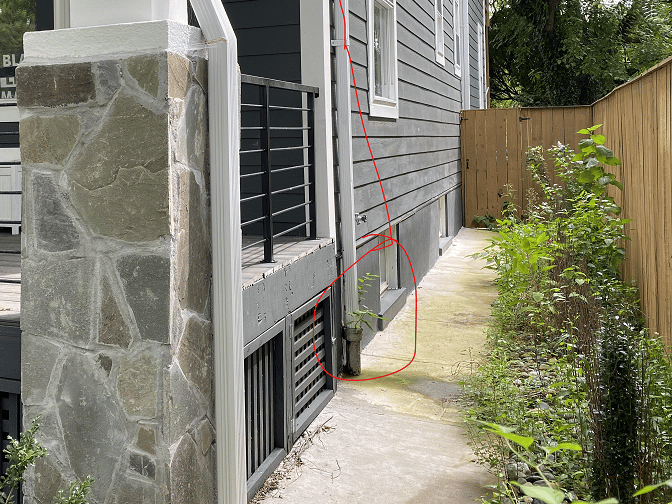
Gutters Overflowing
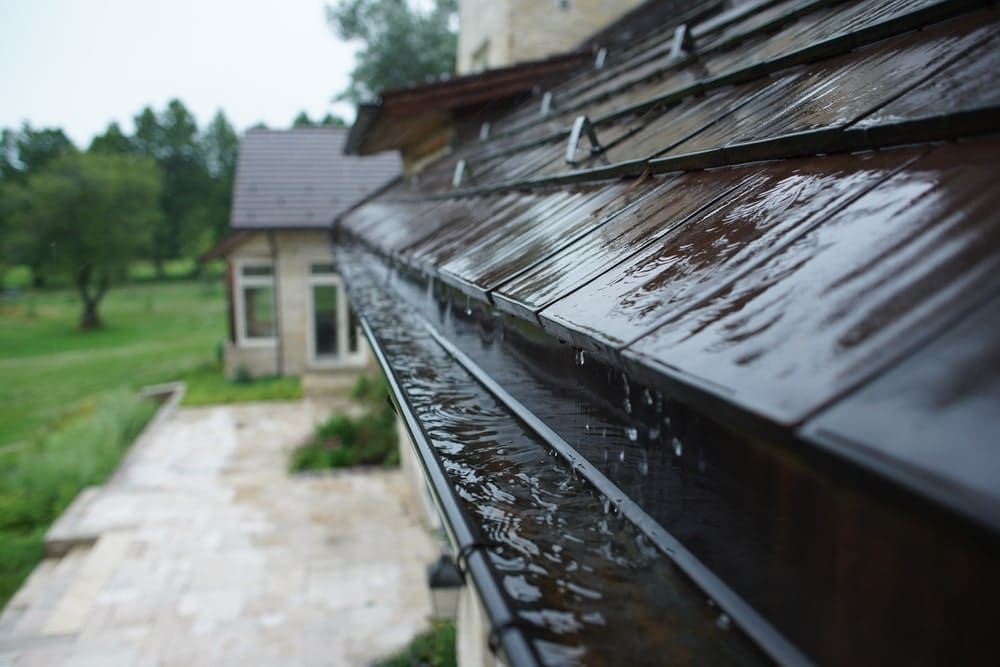
The level of gutter overflow you will see from clogged underground drains is usually pretty extreme. When the clogged underground drain doesn’t allow any water through at all, the water still has to go somewhere.
First the downspout will fill with water. You may see water pouring from the downspout adapter at the bottom, but if the seal is good you may not see any water spilling from there at all. Water could also leak out of any other seams or elbows on the downspout. Once the downspout is completely filled with water, the gutter itself will also start to fill.
You will see water leaking from every gutter seam it can find at this point. Lastly, once the gutter completely fills up the water will pour over the tops of the gutter in large sections, if not throughout the entire gutter.
CLICK HERE for more information on different ways that GUTTER OVERFLOW.
Clogged Downspouts
When it comes to gutter overflow and underground drains it is important to verify that your downspouts are not clogged before hiring somebody to clear your underground drain. The signs of a clogged downspout and a clogged underground drain are almost all the same. If you not sure whether it is a clogged downspout or not, CLICK HERE for more information about clogged downspouts.
Water Leaking/Water Damage in Basement
One of the most common causes of water leaks in the basement, is problems with the gutter system. When the downspout empties too close to your home, water could eventually get into your basement. Also, when underground drains are clogged, the water will backwash towards the home.
As a homeowner, you should be checking around your home for early signs of damages and problems. Observing your basement walls for signs of water leaking should be on your list of things to check routinely. If water is getting into your home like this, and it is near the location of an underground drain, you may want to verify that the drain is clogged or clear.
Exit Point For Underground Drain
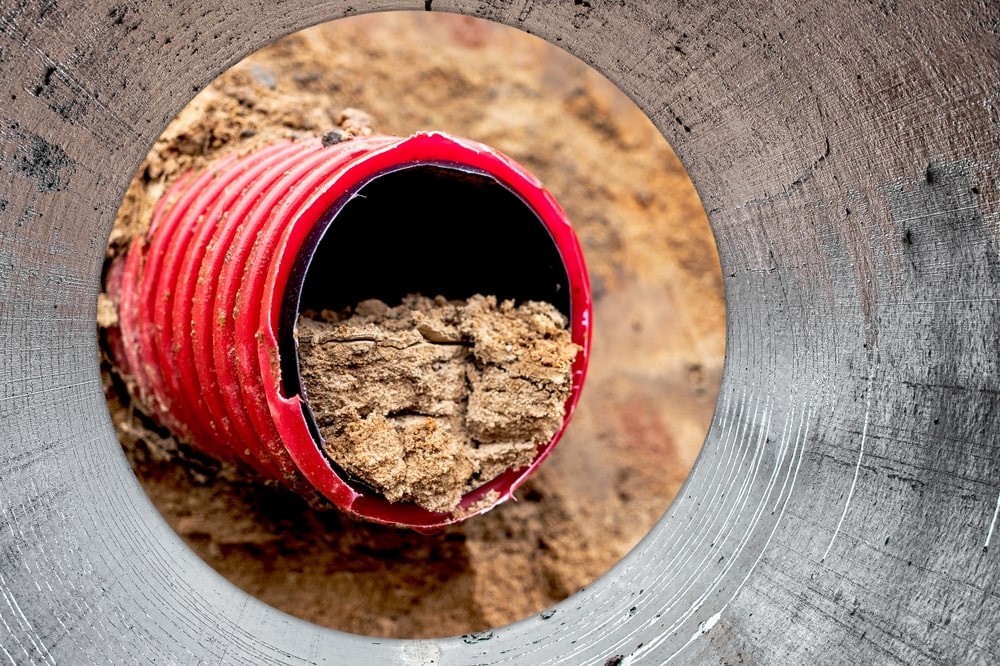
Most underground drains empty out onto the street, sidewalk, or drive way. Sometimes they empty out into storm drains in the middle of yards, and they could even connect directly to the sewer system underground.
When the clogged underground drains connect directly to the sewer, you won’t be able to check the exit point where the drain empties because it is underground. However, if it empties out somewhere that you can see, than you can check during rain to see if the drain is flowing correctly.
Observe your underground drains during rain to makes sure that the water is flowing properly. If little to no water is coming from one drain, but heavily flowing from the other drains, than that drain is more than likely clogged underground.
You could even run water through the drains yourself to see if the water comes out of the exit point. You’ll just need to disconnect the downspout from the underground drain at the adapter. Next you simply put the hose into the drain, or point it into the drain and turn the water on. Lastly, just go to the underground drain outlet and observe if the water is flowing properly. If little to no water comes through, there is a problem.
Problems Caused by Clogged Gutter Drains
There are a couple common things that will get damaged from clogged underground drains and require costly repairs.
The most common problem is your gutters will pull loose quickly and the gutter pitch could be affected. When the gutter fills up with water it becomes very heavy. All of the accumulated weight pulls the gutter from the wall and loosens the brackets.
If the drain is clogged in the winter, the trapped water becomes ice and ice will destroy a gutter system when it can’t drain. You may see icicles hanging from the gutters if this is happening.
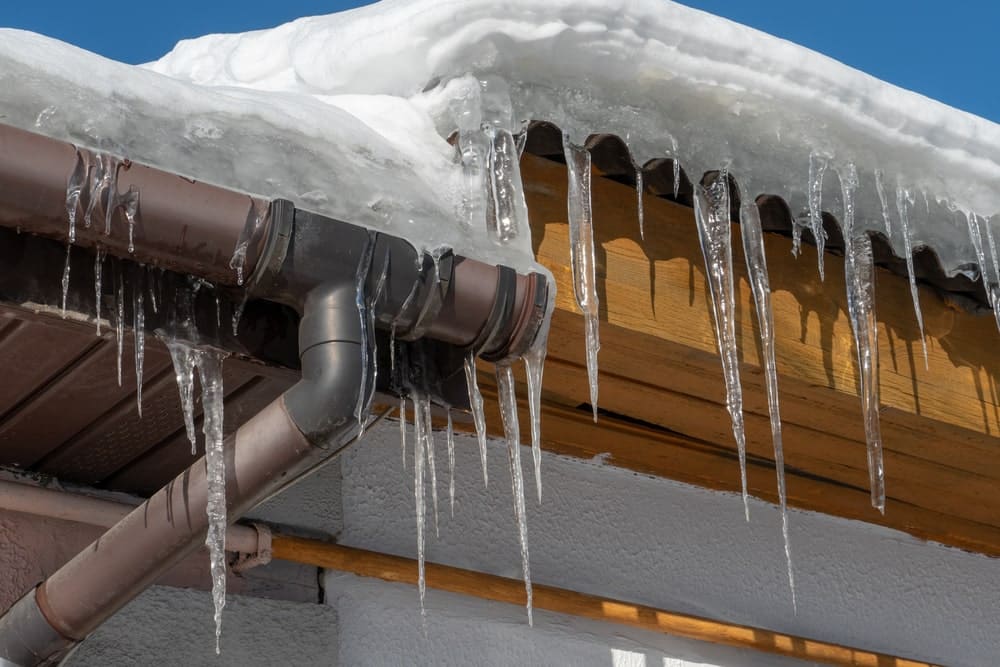
Another thing about ice, is water expands when it turns to ice. Therefore, if the underground drain is full of water, it will bust the pipe when it turns to ice and expands.
The clogged underground drain could bust open during any season, not just in the winter. When they bust open underground close to the home, you will have water leaking into the basement.
How to Fix a Clogged Gutter Drainage System
There is only one way to fix a clogged underground drain. And that is to have your underground drain snaked. While most gutter cleaning companies provide gutter cleaning services and downspout drainage, underground drains are an entirely different affair.
You will more than likely need to contact a plumber or a roto-rooter to have your underground drain cleared. That is one of the main reasons we never suggest having underground drains installed unless you absolutely have to. Underground drains can be anywhere from 10-100 feet long and require a high powered drain snake device that only plumbers have.
Another DIY home remedy is to spray a high powered hose into the drain to attempt to flush it out. To do this you will need to disconnect the downspout from the drain at the adapter. Next, point your high powered hose into the drain and spray the water. When the clogged underground drain fills up with water to the point it is about to spill out of the pipe, stop spraying and wait a few minutes. If the water goes down quickly, repeat and repeat until the clog breaks free and it no longer fills up. However, if the water takes a long time to drain from the pipe, then the clog is really bad and it’s going to need to be snaked with a drain snake.
Other Solutions
If your underground drains become clogged and you can’t get anybody out there to take care of it for some time, you can always disconnect the drain from your downspout and re-direct the water. When we do this, we add an elbow to the bottom of the downspout to re-direct the water away from the home. You can even add a splash stone below the downspout elbow so the water doesn’t get into the home.
The most common alternative for this is to re-direct the water above ground using downspout extensions. Aluminum downspout and Black Corrugated Drain Pipe are the two most common materials used for downspout extensions.
LEARN MORE ABOUT RE-DIRECTING WATER AWAY FROM YOUR HOME WITH DOWNSPOUT EXTENSIONS
How to Prevent Underground Gutter Drainage Clogs
The only way to completely prevent underground drains from clogging is preventing any debris from going down there in the first place. If you have under ground drains, it is highly recommended that you have some sort of leaf protection on your gutters or strainers in your downspouts. Here are some of the most common ways to prevent debris from going into your downspouts and clogging underground drains.
Downspout Strainer
Downspout strainers are the cheapest solution for keeping debris from the downspouts. These are basically a ball of wire that sits on the tops of your downspouts. The problem with these is that the debris will pile up in this area and need to be routinely removed. If not removed, it will cause the water to spill over the gutter in this location. It could also direct the water behind the gutter which will start to damage the wood.
Downspout Filter Box
These Filter Boxes come in a variety of shapes, styles, and sizes but they all provide the same function. Stopping debris from entering the drainage system. Downspout filter boxes are installed to the downspouts where you can easily reach them and remove the debris yourself.
For some people these are a better option than the strainers, because you don’t have to climb onto the roof to remove the debris. However, they are not full proof as your downspout will still get clogged above the strainer. If this happens you have to take the downspout apart (which isn’t very hard) These filters do keep the debris from going into and clogging the underground drains.
We don’t suggest these inline downspout traps if you do not have underground drains. The main reason is that once the debris reaches the straight part of the downspout it is already going to flow out naturally. All downspout clogs occur in the elbows where bigger debris gets dislodged. Once the debris has made it past the elbow, it is home free. These downspout traps are not a solution to gutter cleaning at all and should only be used to protect underground drains.
Gutter Covers/Leaf Guards
Some will say that gutter covers can help prevent clogged gutter drains. While they can indeed work well to keep leaves out of your gutters, they still need to be well-maintained so leaves don’t pile up on top instead.
So do gutter leaf guards really work? Our gutter experts think that it might not be the worth the investment.
CONCLUSION
After being in the gutter service business for over 10 years, we’ve come to the conclusion that we do not recommend underground drains unless they are installed properly by professionals, and you get regular gutter cleaning throughout the year.
Another thing to consider is that most gutter cleaning companies do not service the underground drains, so you will need to contact two different service companies if your underground drains become clogged and your gutters become damaged. Plus, you need a landscaper to install or remove underground drains. That’s three different companies that have to be involved with the underground drain, and they are just not worth the hassle, the price, or the damage that they cause.
Lastly, we just wanted to throw in there that not only do landscapers install underground drains. But also Basement Water Proofers install these systems as well. If you were serious about getting an underground drain installed for your gutter system. We would suggest the Water Proofers over the landscapers, but it’s your call.
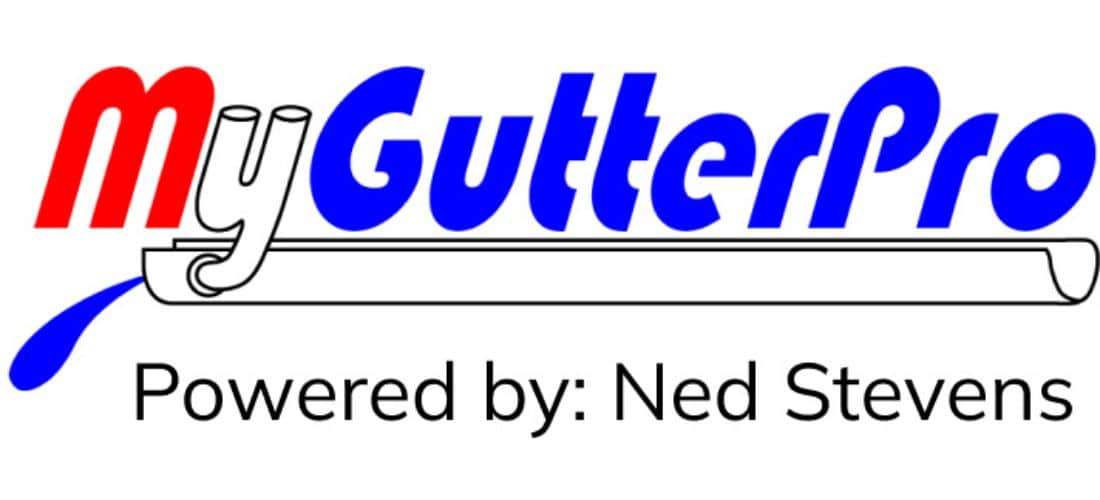

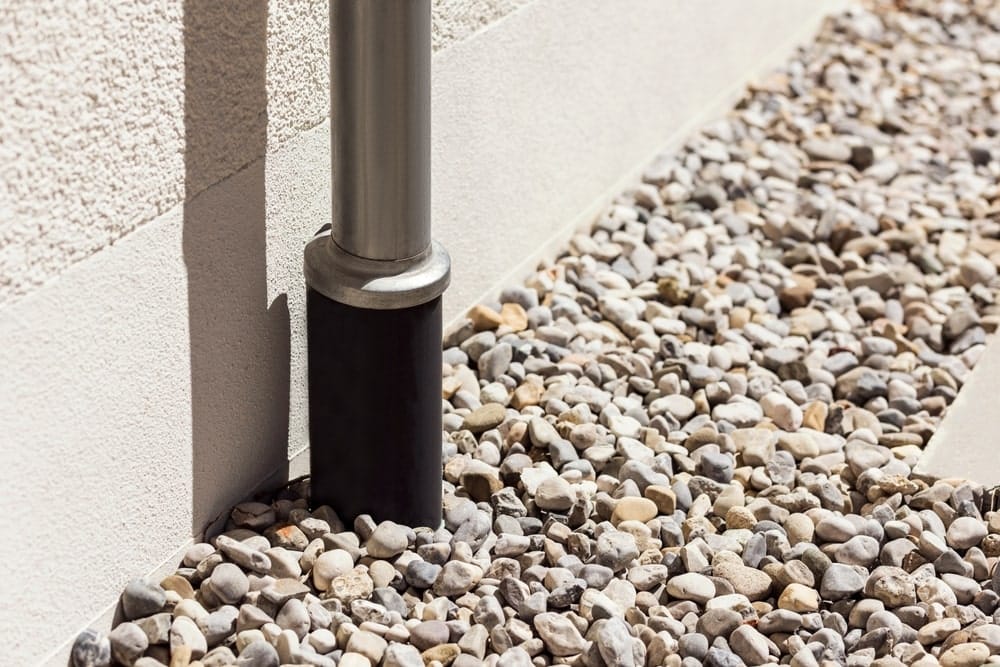
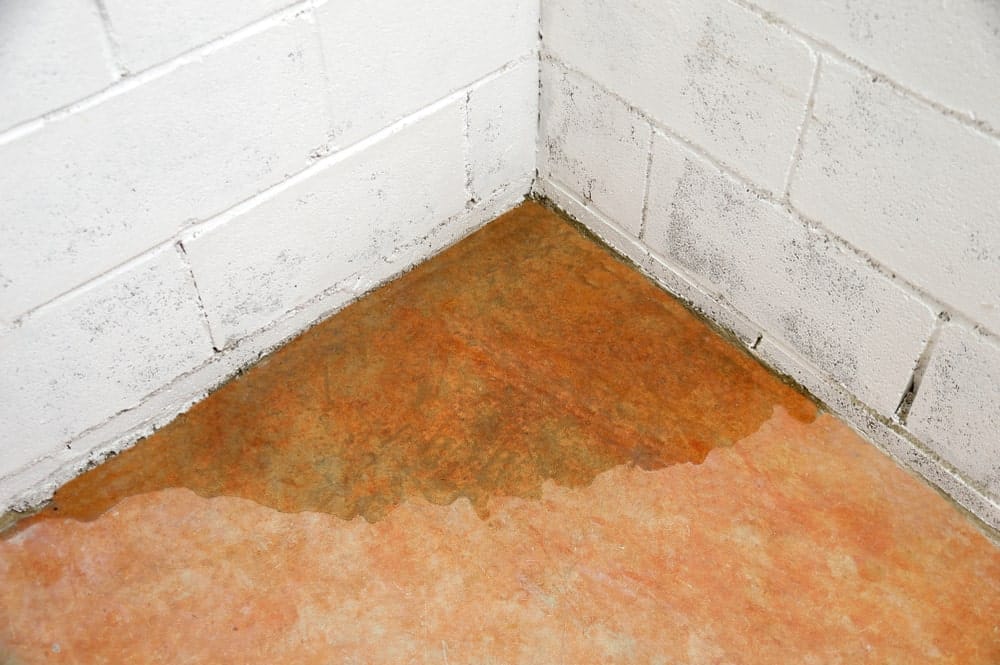
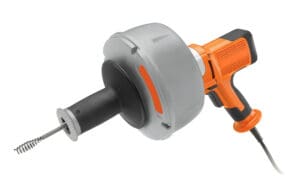
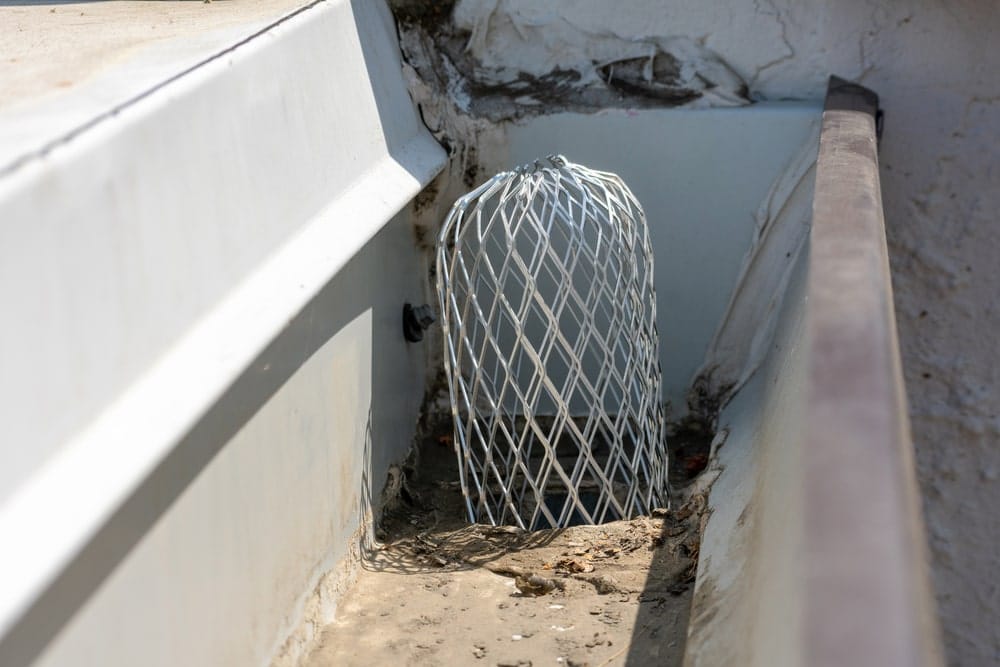


19 Responses
Thanks for pointing out that gutter covers will help a lot in protecting my drains better. I plan to get drain repair services soon because my drains have been showing signs that they might be partially clogged. As such, it would be better to get that addressed soon instead of waiting for it to get worse.
When you mentioned that water leaks in the basement are a big sign of a huge sewer problem, I remember my son saying he found a lot of water pools there recently. We’ve since cleaned them up, but if these keep happening, I may need to take some serious action. I’ll start looking for any clogged drain experts in the area that can assist us should these problems get even worse.
Best view i have ever seen !
Thanks for the suggestion of checking your home’s surroundings for signs of standing water before it’s too late. I had no idea that this is one of the main signs of a drain that’s clogged. I’ll probably consider your suggestion of leaving this to a professional plumber before it worsensns when it happens.
Everything is very open and very clear explanation of issues. was truly information. Your website is very useful. Thanks for sharing.
Great article, totally what I needed.
Wow, awesome blog structure! How lengthy have you ever been blogging for? you make blogging glance easy. The total look of your site is great, let alone the content material!!
Hello and thanks for providing this helpful information. I was hoping you could answer a question for me. I had my gutters cleaned and my underground drains cleared by Roto Rooter because the downspouts were all backing up like you pictures show. We also had to get a new dry well installed as we are rural and our original one was full, we are rural. Now everything works good except in a hard rain, then some still back up. In a downpour, they all backup. We have a large roof ( 4000 sq ft ranch style house). Is this a common issue? What I would like to do is hae the gutter and drainage system work when it does but have an alternate method to run the water away from the foundation during these heavy rains. Some like a catch basin with a line to drain out say 50 to 100 feet. But I cannot figure out if there is a way to make it an either or drain. A check valve of some sort maybe? Do you know of a way to direct the flow of water two different directions out of the downspout?
Pat,
Hello and thank you for reaching out to My Gutter Pro.
We don’t clean or install underground drains, but we will let you know what we know.
The first thing you want to think of is if you have leaf protection on your gutters or not.
As you may have read in the article, leaf protection is a must with underground drains.
Without protection debris is able to go underground and cause clogs that are expensive to deal with.
Anyway, just wanted to make sure you were aware of that important point to make sure nothing else goes down there.
We’re not too familiar with dry wells unfortunately.
We always suggest to run above ground extensions. It is a relatively cheap solution that will ensure the water is not backing up around your foundation.
You can leave the underground ones in place and switch to above temporarily.
You could even have a downspout diverter installed to all of them. That way when they start backing up you can switch them to empty above ground.
Google “downspout diverter” to see what we’re referring to. They are typically used for rain barrels to divert the water away once they fill up.
Let us know if you have any more questions and thanks again.
Tony Waldron
Hey there just wanted to give you a brief heads up and let you know a few of the pictures aren’t loading correctly. I’m not sure why but I think its a linking issue. I’ve tried it in two different web browsers and both show the same outcome.
Thanks for the reminder that it’s important to also control the amount of debris coming into my drains to prevent future problems. I’d like to get drain repair services soon because I’m interested in getting my drain cleaned soon. I might as well patch some of its flaws in the process.